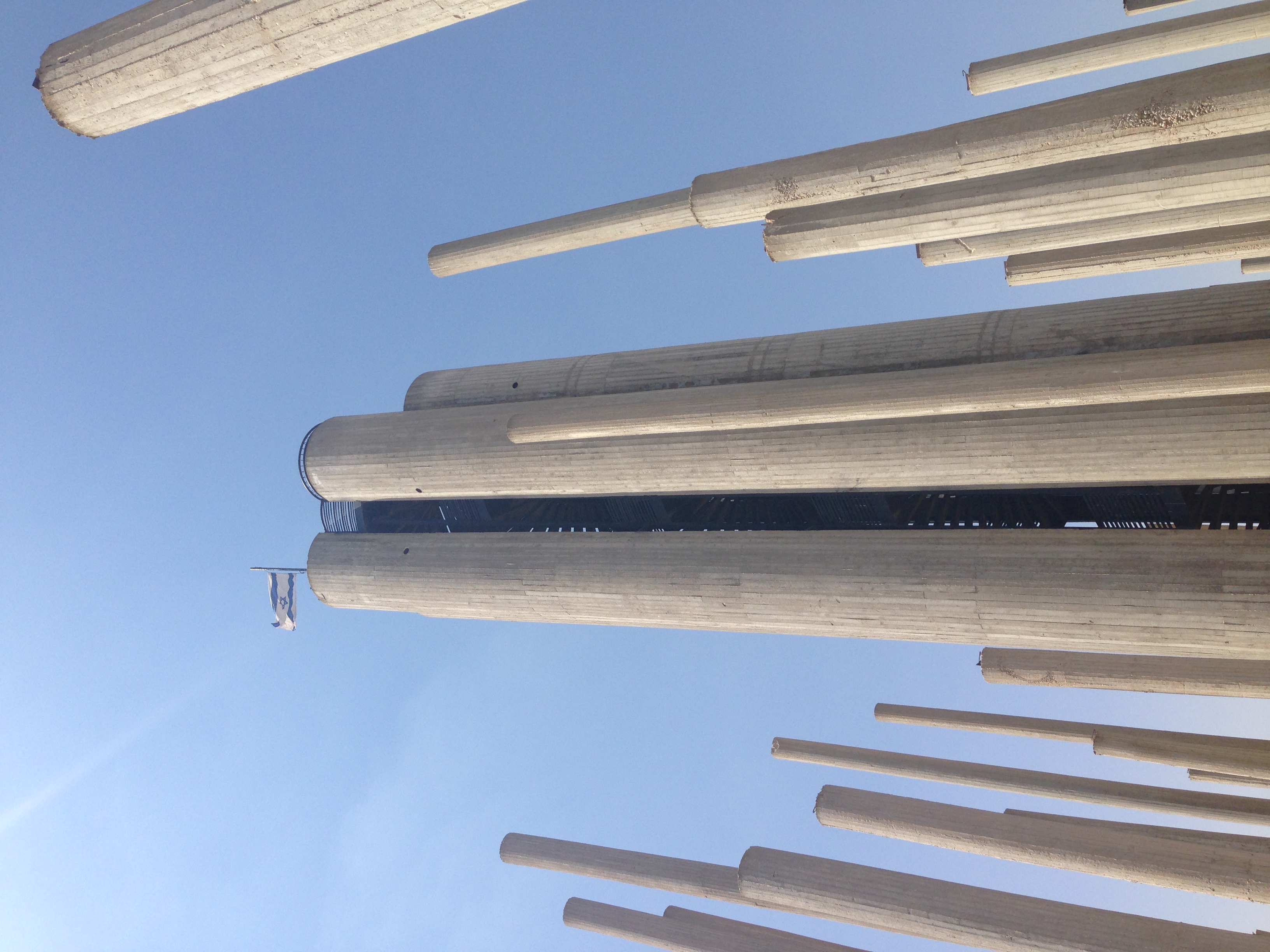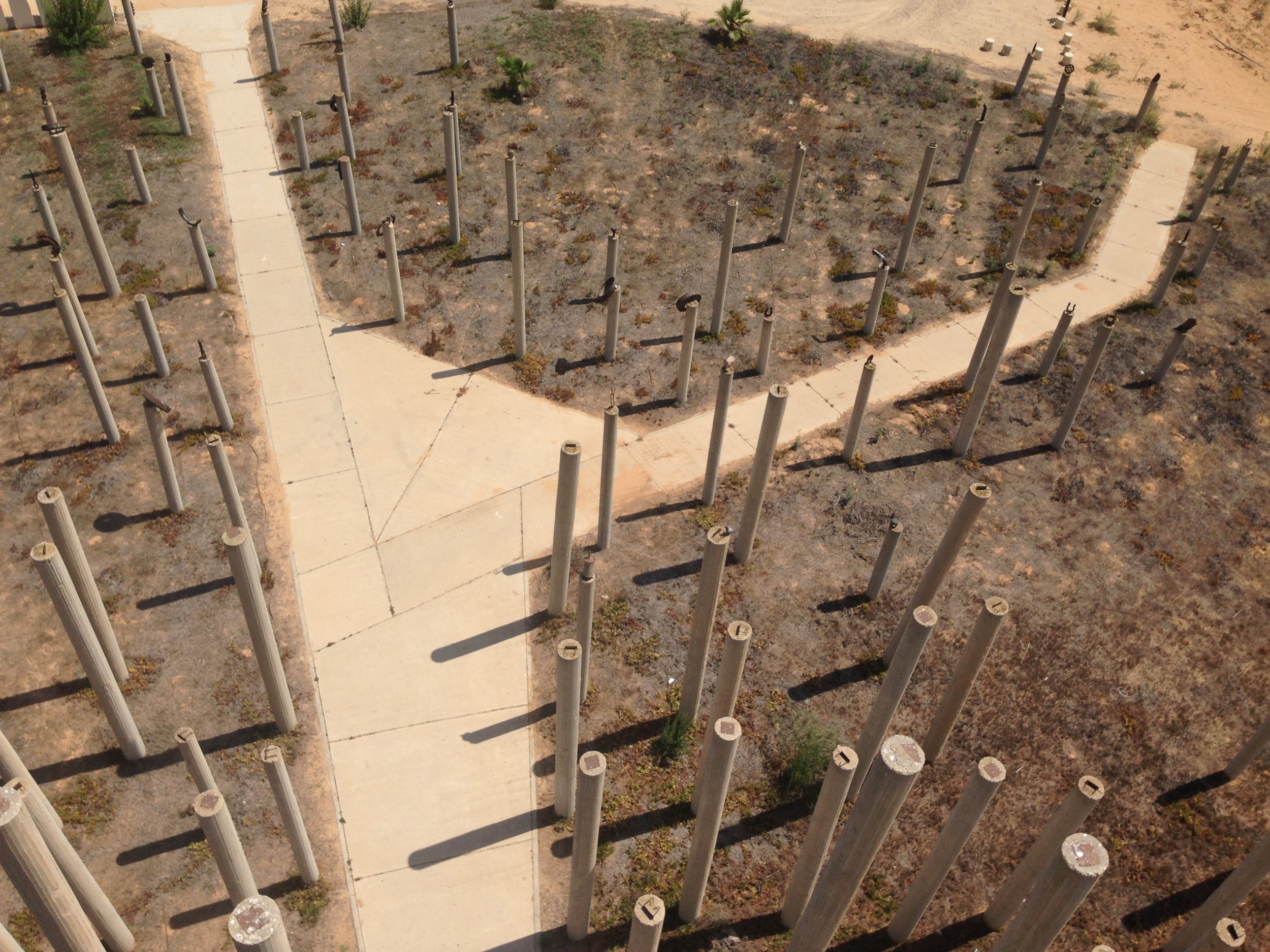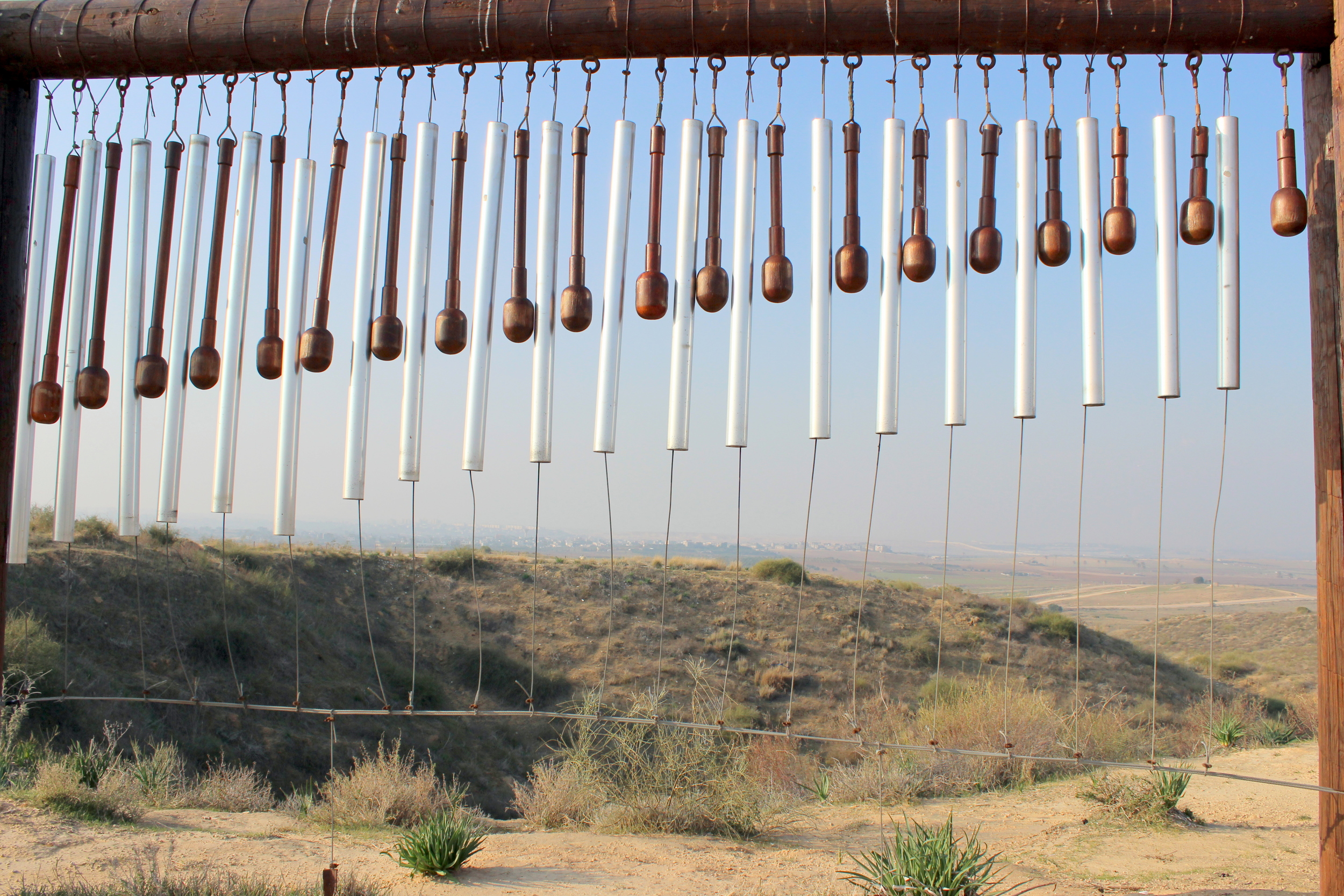"And the Desert will bloom"- Ben Gurion
The South is scattered with memorials and shelters. This weekend I visited my family down at the Kibbutz and we hopped in the car and drove around the area. The South, the periphery, is often overlooked in the news about Israel and Palestine. My aunt and uncle crafted a tour winding through agricultural roads and memorials.
We began at a huge memorial protruding like an industrial scar in the face of the desert that had been built in the 1977 to commemorate the war with Egypt. The memorial honored the 180 lives lost in 6 days and stated that, "The true heroes are the ones who do not return." The whole thing had been constructed in an Israeli town that used to be in the Sinai desert, but after Israel gave back the Sinai in the peace agreement in 1978, the whole memorial was dismantled and transported within the borders. We climbed to the top and from the edge could see the Gaza Strip. So close, we could make out buildings and different neighborhoods. As we scanned from our birds eye view and got the sense of how close everything is, my aunt suddenly pointed to the ground and squealed. "Ah! Look!" Someone had used stones to spell out, "Noah, will you marry me?" and propose to his girlfriend. She could only see it if she climbed up all the stairs to the top, and rather than looking out towards Gaza, looked down towards the ground nearby.
We drove past fields of peanuts, melons, potatoes, greenhouses filled with cherry tomatoes, orchards of avocados, lemons and oranges. We waved to the Thai workers wearing facemasks against the sand; they replaced the workers who used to come from Gaza. We passed Bedouins who act as guards for fields.
And then to another memorial, this time for a young soldier, who died in the tragic helicopter crash in 1997 when 73 soldiers were on their way to (then occupied) Beirut and died. The Asaf Siboni memorial sculpture is composed of pipes and gongs, when the wind blows it becomes a wind chime. The haunting sound set the background as we looked out again at Gaza, at the neighborhood Shejaiya, and at Gaza City. My aunt and uncle pointed out how the tunnels that Hamas built last summer had entrances there, she points to the gulf in the nearby valley, and there, to the hill right next to us. She shared the fear of the purported plan of Hamas to build tunnels into the dining halls of the kibbutz near the border and plan a surprise attack during Rosh Hashana (new year) dinner. She expressed great relief that the plan was thwarted last summer when the IDF destroyed tunnels.





The neighboring towns and agricultural fields go right up to the border with Gaza. My aunt described all the hope in 2005, after Israel evacuated the settlements, that something would be built and that something would come out of the newly liberated Gaza Strip. The Palestinian Authority built an airport, and a port. There was talk of a road being built that would run directly from Gaza to the West Bank and thus connect Palestine. There was talk of commerce, new plans for economic partnerships. And then Hamas won the elections in 2006 and rockets began falling in the South.
We drove right up to the Erez Crossing point at the border. It was dead quiet. Not a soul. It would not have seemed out of place if tumbleweed had rolled by at that instant. But the building was brand new: sparkling bay windows, a parking lot built for people's cars. The whole place looked ready for large crowds of people to pass back and forth.
But today there were no people. Not even a single guard at the entrance. The only sign of life we saw was the boot of one soldier as he propped his feet up against the window of a watchtower. Alone.
The whole day, the conversations that we had revolved around either pride at the accomplishments of the Israeli agricultural project in the desert, or fear that from every side there is an enemy that wants to destroy you. My aunt talked about the recent rockets launched up north from ISIS near the Golan Heights. We discussed the booming we heard the day before, and the subsequent text message that the residents of the southern area received alerting them that it was “just” Egypt dealing with the current problems in the Sinai near the border with Israel. We talked about Hamas in Gaza and how there are still rockets that are launched over the border all the time, “You just don't hear about it,” said my aunt. She shared her fears of the weakening northern border and Hezbollah.
This drive-by was eye opening again to the larger geo-politics that are playing out in this region. It is easy to get sucked into the details of Jerusalem and the West Bank, but it's much easier to forget Gaza and all the political, security and economic implications of that tiny blockaded strip. This reminds me of an Israeli photographer, Roi Kuper, who took photos of the border with Gaza: beautiful large, landscape shots. The point of the project was to point to that which was forgotten and ignored and overlooked everyday. The project is called Gaza Dream. Kuper describes the project, “It’s like a mirage – a city perched beyond the horizon, like one of Italo Calvino’s Invisible Cities. We’re used to seeing Gaza either in aerial photographs or in shots taken amid destroyed houses, but not from this distance. Not from the fields that are so immediate to those who live in this area. As I work on the project, I keep asking myself: what will grow in these fields?”
Roi Kulper's "Gaza Dream" at the Israel Museum in Jerusalem.
People just want to live, said my aunt. Yet with everything that happened and happens in Gaza, the whole surrounding area in the South feels frozen in time. No chance for true advancement and development, no trust that things will remain quiet or be prosperous for either side.
We stopped for a brief dip in the Mediterranean Sea at a nearby beach. Only a few kilometers from the northern tip of Gaza, people were lounging, yelling at their children, applying sunscreen, eating watermelon out of the cooler. The ice-cream truck was parked right near the entrance and the obnoxious tune repeated in an array of jarring notes that you couldn’t ignore.
More than anything, I was struck again how there can be so many different bubbles and realities that live practically on top of one other and don't intersect. Realities that aren’t real to one person or another depending on where they are.
And as we drove on the highway, we whipped past bomb-shelters, which had been planted on the side of the road next to every bus stop. For just in case. For the next war.
In two days it will be the one-year anniversary marking the end of the last year's operation in Gaza. I'll be at the tent of Women Wage Peace for their final day of their fast. They are a group of women who claim to represent all the political and ethnic spectrums in Israeli society who are demanding for a political solution to the conflict. They call for peace and they call for it now. They have just held a 50-day fast in front of the Prime Minister's house in Jerusalem in order to commemorate last summer’s war. Every day a different group of women fasted and sat underneath a tent outside. They invited speakers, supporters, and passerby to engage in a conversation about peace and what could it mean to all the peoples living here. They began to organize after last summer as many women joined forces in the face of the never-ending cycle of conflict. I’ll be sure to share my findings of my research once it is done. Until then, read more about them here.
